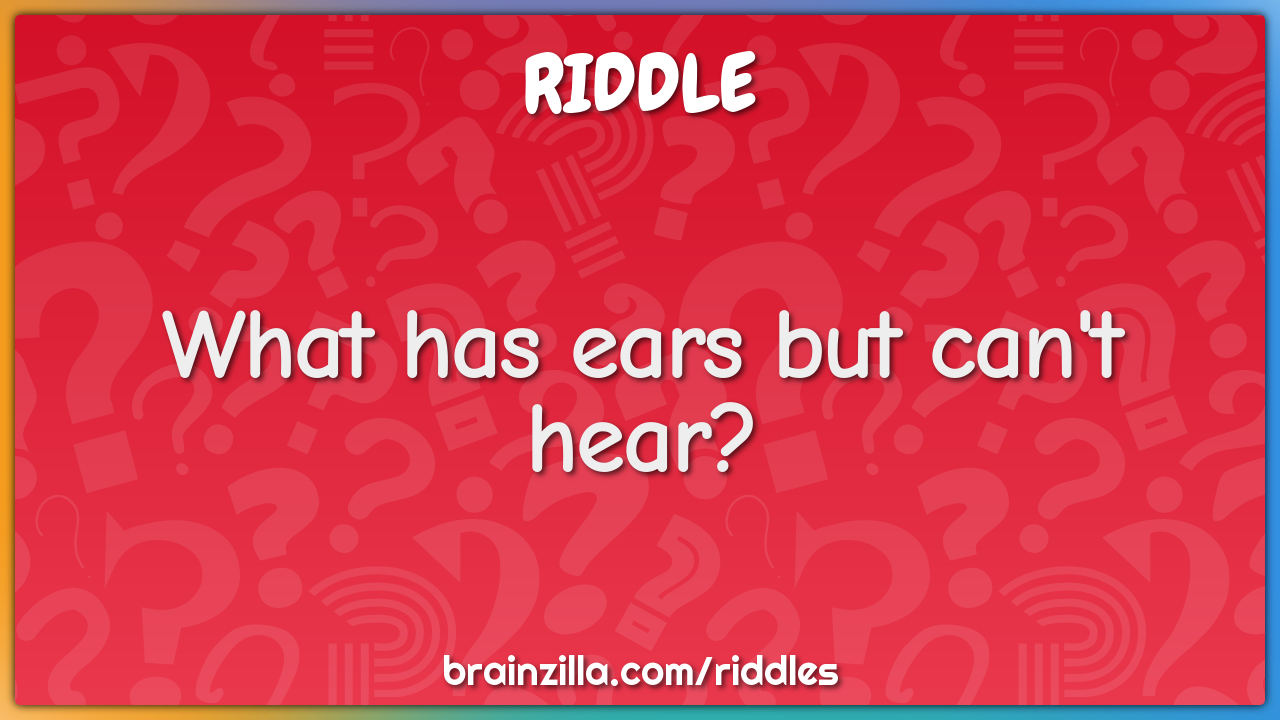Understanding the Riddle: Delving into Its Meaning
Exploring the Metaphorical Aspect
The riddle operates on a metaphorical level, challenging our perceptions and probing deeper into the essence of hearing versus actively listening. It prompts us to reconsider the true nature of attentive listening and understanding.
Highlighting the Contradiction
Ears, as physical organs designed for hearing, represent the superficial act of perceiving sound waves. However, the riddle implies an incapacity for these ears to truly “listen,” hinting at a contradiction between the physical ability to hear and the cognitive act of attentive listening.
What Possesses Ears but Doesn’t Listen? Unraveling the Mystery
Defining the Answer
The answer to this perplexing riddle lies in the depiction of various inanimate objects—things like walls, cornfields, or even books. While these possess representations or illustrations of ears, they lack the cognitive ability to actively listen and comprehend.
Unraveling the Mystery
The riddle serves as a metaphorical paradox, challenging us to reflect on the contrast between the physical presence of ears and the profound act of genuine listening, transcending the mere reception of sound.
Metaphorical Significance
Symbolism in the Riddle
Beyond its literal interpretation, the riddle symbolizes the ubiquitous instances in life where the appearance of something doesn’t align with its true essence or purpose.
Real-Life Implications
This enigmatic riddle carries a poignant message, reminding us to seek deeper understanding beyond surface-level appearances and to engage in active, mindful listening in our daily interactions.
Challenging Perspectives: Can Ears Truly Listen?
Analyzing the Capability of Listening
The riddle prompts us to challenge conventional notions by questioning whether ears, as physical entities, are capable of genuine listening.
Expanding the Notion
It encourages a broader perspective, urging us to explore the possibility that listening transcends the confines of physical attributes, encompassing a deeper connection and understanding.
The Art of Active Listening
Distinguishing Hearing from Listening
Understanding the nuances between hearing—merely perceiving sound—and active listening, which involves comprehension, empathy, and engagement, is crucial to unraveling the riddle’s essence.
Tips for Enhancing Listening Skills
Practical strategies, such as maintaining eye contact, practicing empathy, and giving undivided attention, can significantly enhance our ability to actively listen and understand others.
Conclusion: Reflecting on the Riddle’s Essence
In essence, the riddle challenges us to perceive beyond the obvious, urging a deeper understanding of the disparity between physical attributes and genuine engagement. It emphasizes the significance of active listening, encouraging a shift from passive hearing to mindful comprehension and empathy.
